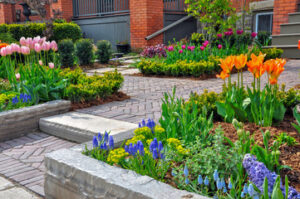Mice are common pests that can cause a variety of health problems, including leptospirosis, lymphocytic choriomeningitis, and salmonellosis. They also spread fleas and ticks that can cause hantavirus pulmonary syndrome, tularemia, and other diseases.

Prevent mice by removing food and nesting materials and patching cracks, holes, and gaps larger than a pencil. You should also trim any overgrowth that provides mice with hiding places. Contact Mice Removal Texas for professional help.
Mice are a common pest problem for homeowners, and they can enter your home through small gaps and cracks. To prevent mice infestations, seal cracks in walls with caulk, steel wool, or foam insulation, and fill any holes larger than a quarter inch in size. Also, trim overgrown vegetation around your house and yard. Mice can use tall grass and thick shrubbery as hiding spots to approach the front of your home, and overgrown foliage can block water drainage.
Check your gutters and downspouts regularly, and repair any leaks as soon as they appear. Then, make sure that the ground around your home is free of any piles of wood or debris. These can provide shelter for mice that are hunting for food or a place to hide, and they can also help them find their way inside your house.
Look for any signs of gnawed or chewed items, mouse droppings, or sounds of rustling in the walls at night. These are telltale signs that you have mice in your home, and you should call a pest control expert immediately.
A professional exterminator will use a variety of tools and techniques to get rid of mice. They will inspect your house and yard for potential entry points, and they may also set traps in the attic or basement. Typically, these traps will contain poison that will kill the rodents when they eat them. They can also use chemical fumigants, such as phosphine and formaldehyde, to fumigate your home and remove the mice infestation.
If you want to try a non-toxic method, put cotton balls soaked with essential oils like clove oil or peppermint oil in places mice frequent in your home, such as drawers, cabinets, and food storage units. The smell of these oils acts as a natural repellent to mice.
To further prevent mice from entering your home, keep trash cans and pet containers sealed tightly, and store firewood away from your house. Also, be sure to rake up fallen leaves and debris, and avoid stacking them near your home. Piles of stacked wood, unraked leaves, and garbage piles can give mice shelter as they hunt for food and a place to live.
Removing Food Sources
Mice can survive on three to four grams of food a day, so even a small amount of food inside a home is enough for a mouse infestation. To prevent mice from entering, crumbs, spills and residue must be promptly cleaned up. All food should be stored in airtight containers. Garbage should also be sealed tightly. Using a combination of steel wool and caulk, large holes in the walls should be closed. The outside of the house should be inspected as well for gaps. Mice can fit through a hole the size of a pencil, so it is important to make sure all areas around the home are tightly sealed.
Mice often use a home’s roof to enter the interior, so it is important to keep trees and shrubbery trimmed. Overgrowth can allow mice to bridge gaps between the ground and roof, allowing them to access the attic or eaves. Additionally, removing harborage sites can prevent mice from entering the home.
Harborage areas include dark, secluded spots like the corners beneath cabinets and behind furniture. They can also include piles of wood, old equipment, rubbish and rock piles, all of which are common places for mice to hide or nest. It is important to remove these hiding places, particularly in the garage and basement, which are frequent entry points for mice.
It is also important to store pet food, bird seed, grass seeds and other bulk foods in metal or plastic storage containers with lids. Mice can chew through cardboard, paper and lightweight plastic to get at food. It is also important to remove all open garbage in a timely manner. Lastly, storing wood piles away from the foundation of the house and stacking them on pallets that are at least 18″ off the ground can prevent mice from making their way into the house.
Finally, homeowners should be aware that mice droppings smell bad and can stain carpeting. It is also important to watch for other signs of an infestation, including gnaw marks and scurrying. If a homeowner sees these signs, they should contact an exterminator as soon as possible.
Using Baits
The most effective way to deal with a mice infestation is to trap them. Set out several traps, both snap and bait stations, throughout the home using different kinds of bait. This will increase your chances of catching the mice because they may not be familiar with one kind of trap and are hesitant to approach it.
Putting too much bait on a trap can cause the rodent to eat without setting off the device, so it is important to use only a pea-sized amount. Also, make sure that you have enough traps to catch the mice because they will reproduce quickly.
There are several types of traps available for use at home, including snap and electronic traps. These traps can be difficult to operate correctly, so it is important to follow the instructions closely. Also, they can cause a lot of pain and suffering to the mice because they do not kill them instantly. Therefore, these traps are not the best option for most people who want to get rid of mice.
A better choice is to use d-CON bait stations, which are easy to set up and are highly effective against mice. d-CON bait stations work both indoors and outdoors, so you can place them in all the possible entry points into the house. This includes places like the corners of closets, the space behind cabinets, and in attics and basements. You should also place d-CON bait stations near any areas where you have seen mouse droppings, gnaw marks, or nesting materials.
Keeping your yard free of hiding places can help prevent mice from entering the house, too. Make sure to trim shrubs and trees so that they are not close to the foundation of your home, and remove piles of rubbish, old equipment, rock piles, or debris. Also, make sure to keep firewood and other secluded shelters away from the outside of your home.
Finally, be sure to seal up any holes or cracks that you find in the walls of your house. These areas can be entrances for mice, especially if they are close to utility lines or unscreened vents. If you cannot seal them, fill them with caulk and steel wool (mice can’t chew through these).
Contact Us Today
Even if you do your best to keep mice out of your home, they can still find their way in. Rodents are nocturnal, so they will typically enter during the night. As a result, homeowners are more likely to hear scratching and chewing noises coming from their walls when they have a mouse infestation.
In addition, mice can damage homes by gnawing through electrical wires and drywall. These destructive habits can be dangerous to your family’s health and lead to fire hazards. Mice droppings also contain a dangerous fungus, which can spread to humans if it is breathed in.
It is important to call a professional pest control company if you suspect that you have a mice problem. The longer you wait to address the issue, the more costly it will be to repair the damage caused by the rodents.
Mice are capable of destroying entire neighborhoods as they travel from one property to another, so it is important to take steps to prevent them from invading your home. For example, make sure that your yard is free of debris and that all wood piles are far from the house. This will help to prevent mice from using them as nesting sites.
For severe infestations, some homeowners may need to seek out the services of a residential pest control specialist. These professionals can provide a variety of options for eliminating mice and other rodents from the home, including fumigation. Fumigation uses gases such as phosphine to penetrate the home’s interior, making it inhospitable for rodents and ultimately killing them. This method is particularly effective when other control methods have failed, such as traps or poisons.
While it is possible to get rid of mice on your own, a professional is recommended. It is difficult for most people to accurately identify a rodent infestation, and DIY methods such as traps and bait are unlikely to eliminate the population entirely. A professional will perform an inspection of the property to determine if there is a mouse problem, and then provide a treatment plan. After the mice have been removed from the property, the pest control expert will seal any entry points identified to reduce the odds of re-infestation.
